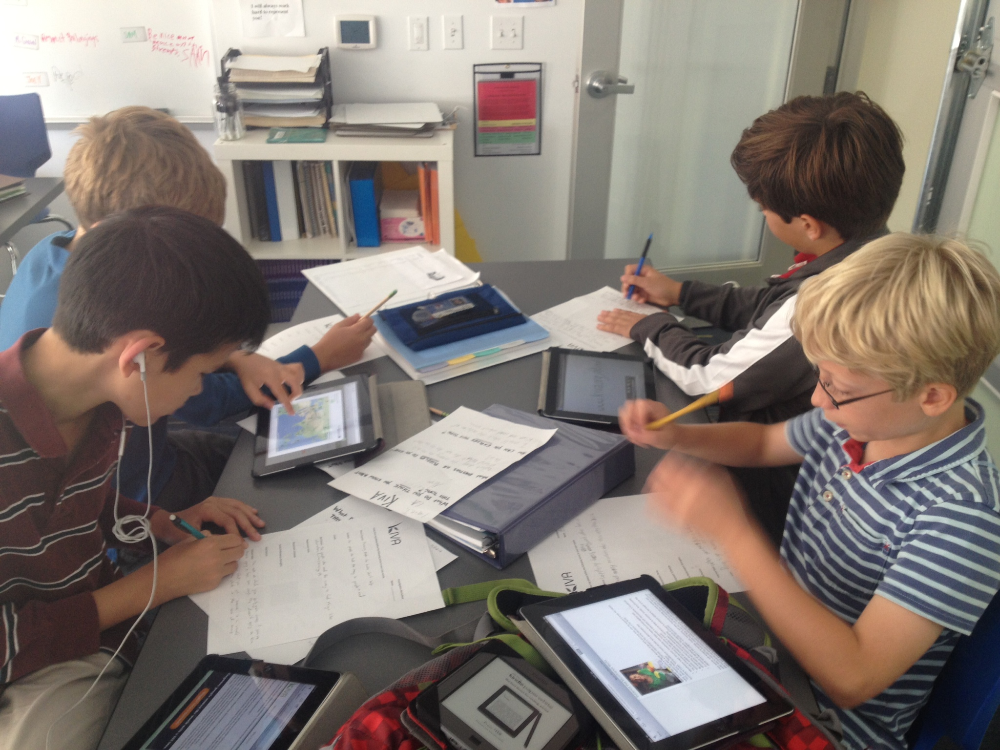The 6th graders have been entering my classroom the past few days knowing that a project was on the horizon. Is it Kiva they ask? Will we start selling products they wonder? This is where a project with a large public audience becomes a bit more challenging. Do the students know too much when they enter my classroom? Will the "need to know" die out? Will students not need to participate in "inquiry"? Will it just turn into a project and not a pbl?
In order to gauge where they were on the toic I started class with a thinking routine called Think Puzzle Explore. With a few minutes of solo thinking time and then a partner share before coming back to our circle up they asked themselves the following questions. What do you THINK you know about this topic? What questions or PUZZLES do you have? How can you EXPLORE this topic? The topic-KIVA.
Of course some kids started thinking about KIVA as the project they saw from the outside and not as a non for profit in San Francisco at all. Yes, some of the students wrote that they think "Kiva" is us starting a business and selling to the other students. And sure that has been a product of a driving question PBL, "How can we model micro financing in our own community?". But I quickly redirected them to thinking about the company as a whole. Kiva isn't about Town School. It's about something much bigger, I reminded them.
What do they think?
They think Kiva is a company that loans money to businesses and or people in need. They think the need base is from education and/or money. They think it is micro financing but they don't really know what that is. They think people may not pay back their loans. They think kiva is a non profit.
What PUZZLES them?
How do you know what Kiva is doing is good? real? They wonder if Kiva is a big or small company/organization? How do they find people to loan to? Does Kiva profit? Do they make money? How do the borrowers actually get the money/How do the lenders get the money back? How does Kiva keep track of the money coming in and out? What's the chance of getting the money back? Are other schools in San Fran working with Kiva? Is interest involved in the loans? Who was it founded by? How many loans has Kiva made?
How will they EXPLORE?
While today was an investigation of Kiva using these puzzles and some vocabulary, the boys also hope to talk to people from Kiva and the current 7th and 8th graders. The boys hope to have access to people at Kiva to answer their bigger questions. They also hope to explore the concept of Donate vs Lend. And lastly, they hope to do a project often referred to around here as KIVA.
So in the end when they ask, "Are we going to do Kiva?" I just have to laugh. They have no idea what that looks like on the inside. They have no idea how investing in micro financing, working through the struggles of modeling it and "connecting" with the greater world will transform them in the end. Fingers crossed, it's worked so far.


